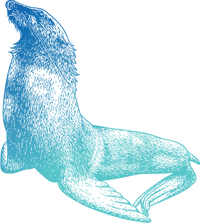Just like humans, animals do best when they have opportunities to explore, learn, make choices and experience new things. Animals also need regular checkups and health care in order to thrive—just like we do.
That’s where enrichment and training come in. Both are essential elements that contribute to our overall work to nurture the wellbeing of every animal entrusted to our care.
What is enrichment?
In the world of animal care, enrichment refers to experiences that allow animals to satisfy their behavioral needs, optimize their level of mental stimulation and create a rich, variable environment. Habitat elements, novel items, scents, foods and training sessions—all can be used to help stimulate natural behaviors and keep things interesting for the animals in our care. And, as luck would have it, offering enrichments to animals at the Aquarium also enriches the experiences of our guests.
Every animal at the Seattle Aquarium—from invertebrates and fish to birds and mammals—receives enrichment. What that looks like varies widely from species to species, but all enrichment methods and/or tools are categorized under one or more of the following umbrellas:
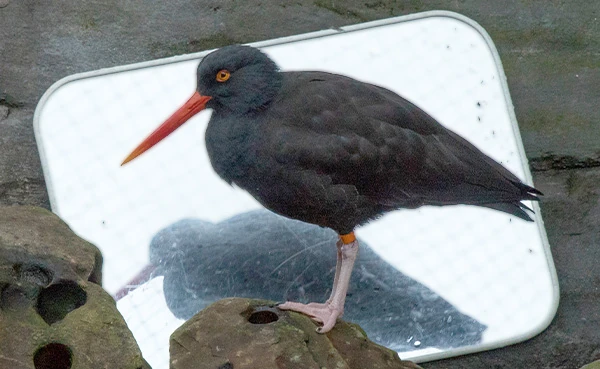
Sensory
This can include anything that offers animals stimulation: visual, olfactory (sense of smell), audible and/or tactile (sense of touch). For example, adding mirrors or playing unique sounds in the shorebird habitats, or changing water flow rate or direction for corals to create experiences similar to those in the wild.
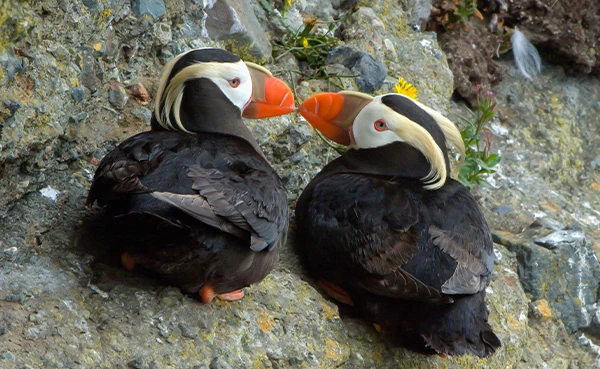
Social groupings
Replicating various grouping arrangements found in the wild is stimulating and can facilitate schooling behaviors in animals like trout; allogrooming (or the grooming of another animal) in river otters; and opportunities for bonding, like the mated wolf eel pairs at the Aquarium.
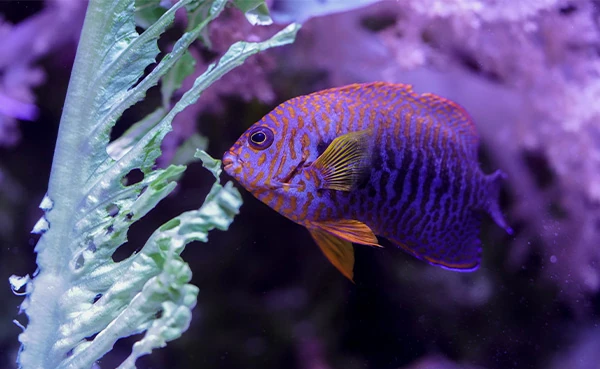
Habitat elements
Animal care staff can change elements within a habitat, such as rearranging rocks or making sand mounds, to encourage exploration or development of new territories for fish or mobile invertebrates such as sea urchins and sea stars. Another example: Adding native plants to a habitat can provide new nest-building materials and shade for birds.
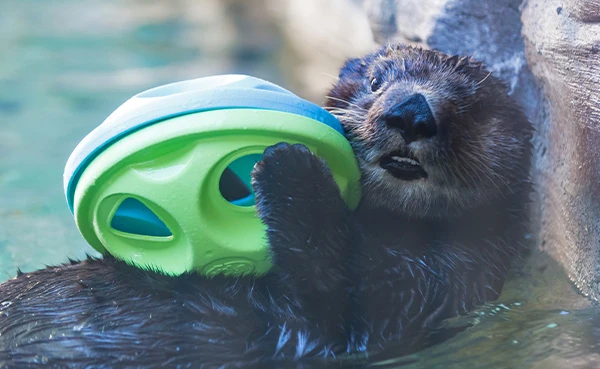
Toys, puzzles and more
Toys, natural items like logs or rocks, puzzles and more can bring forth natural behaviors. Puzzle feeders are popular with animals from sharks and rays to giant Pacific octopuses and northern fur seals. And algae, shells and other natural items are used by invertebrates, such as decorator crabs, for camouflage.
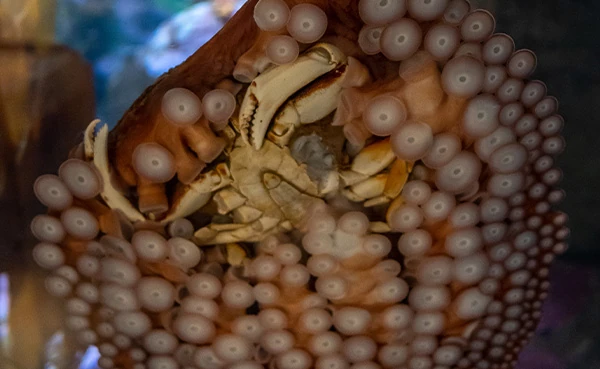
Food/feeding
Our staff can give animals food in new ways, such as hiding it to promote natural feeding strategies or delivering it in a puzzle—or introduce new foods. For example, the diet of benthic (or bottom-dwelling) sharks and rays in the wild often includes crunchy or chewy prey like clams, crabs and other shellfish. Silicone feeding balls offer the sharks and rays in our care—who live in our new Ocean Pavilion—opportunities to gnaw on their food in the same way.
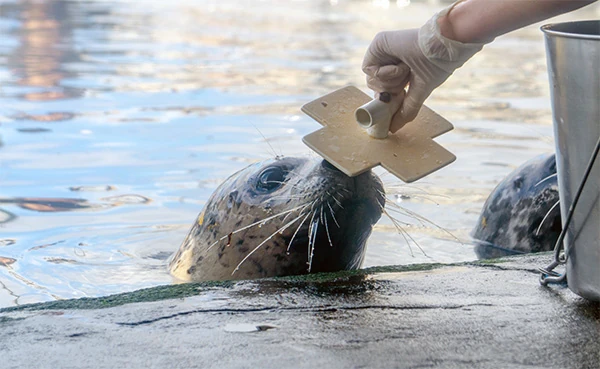
Behavioral
Mental stimulation is as important as physical stimulation. Training is one example of behavioral enrichment that not only benefits the animals mentally, but can aid in their health care as well. Providing the animals with choice is also important for stimulation and a sense of autonomy—such as choosing to spend time where they prefer or deciding whether they want to engage in an activity.
The type and frequency of enrichment is determined by what is appropriate for each type of animal and the goals set by our animal care and veterinary staff. For example, marine mammals at the Aquarium are offered enrichment at least once per day; cephalopods (like octopuses) at least three times per week; and fish at least twice per week. And a goal for a particular enrichment might be to include a specific sensory experience based on the season, natural behavior for the species, or specific benefit for an animal.
All enrichments are carefully planned and evaluated by Aquarium animal care and veterinary staff to make sure they’re safe and effective—and staff are always thinking of new ideas to keep enrichments fresh and interesting for the animals.
Training animals to participate in their own care
At the Aquarium, we don’t train animals to do tricks—but we do provide training to many species so they can be mentally enriched and even participate in their own health care.
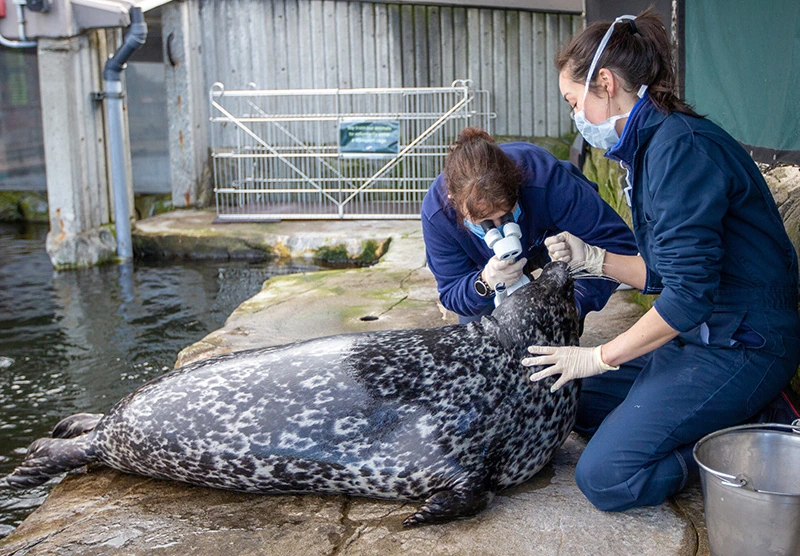
Marine mammals
Just like we humans participate in our own health care by opening our mouths to get our teeth cleaned at the dentist or stepping on the scale at the doctor’s office, seals and otters at the Aquarium are trained to participate in routine exams, oral hygiene, weight checks and more. Training marine mammals to cooperate with staff during health exams reduces stress for the animals and allows for needed routine checkups.
For example, animal care staff train the seals and otters to hold still, allowing veterinary staff to get a close look at their eyes to ensure they’re healthy. Because taking an x-ray can also be a very important part of an exam, the seals and otters are also trained to lie still on the x-ray plate while we take an image. We then access those images to see how they’re doing internally.
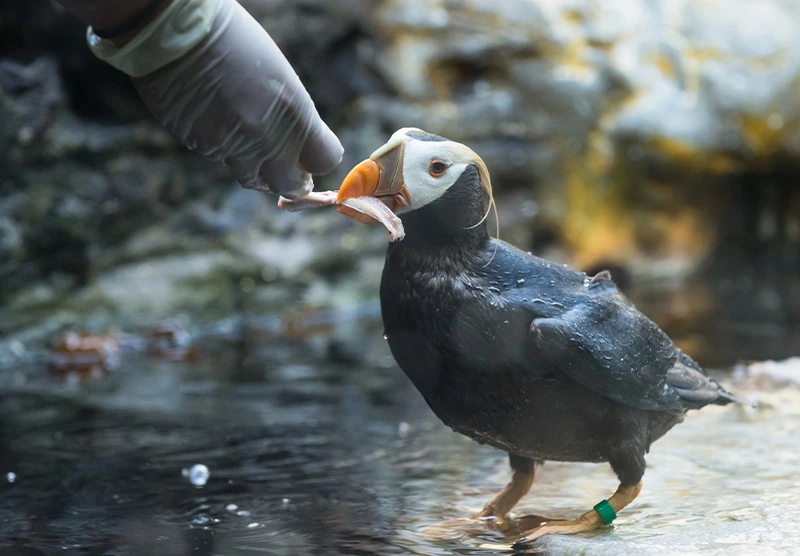
Birds
The birds in our care don’t have as large a repertoire of trained behaviors as the mammals, but that doesn’t mean they don’t participate in their own health care. One important way that they do? Simply by eating.
The Aquarium’s animal care staff closely monitors food consumption to help assess bird health. They count how many and what type of fish or insect each bird eats during the day, and observe behavior during feedings as an indicator of overall wellbeing. For birds that come to a specific station, or location, to eat and are fed by hand (such as tufted puffins), staff can also deliver vitamins or necessary medications via a tasty fish.
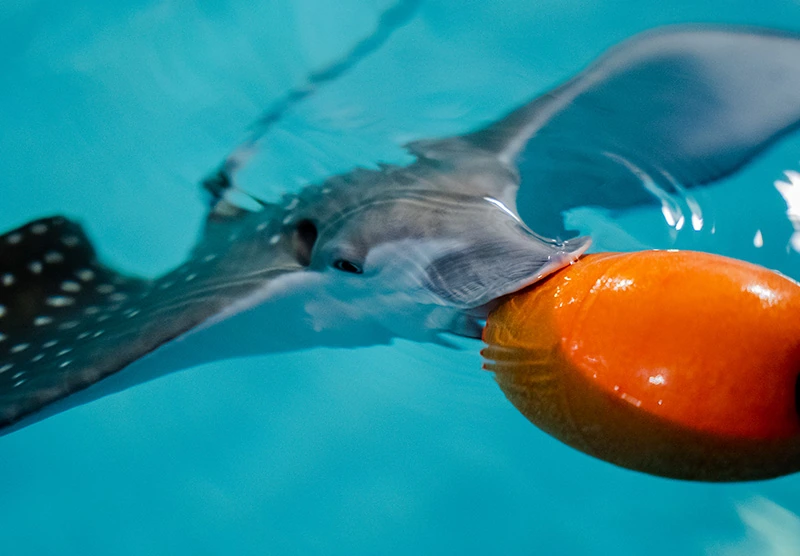
Sharks and rays
Even some of the sharks and rays that inhabit the Aquarium’s new Ocean Pavilion are trained to participate in their own care.
For example, the eagle rays in our care have been trained to swim onto stretchers. Once there, they can be lifted from the water safely while remaining submerged. They can then be transported to smaller habitats for exams by our vet team. This trained behavior helps reduce any stress the animals might experience during transport and exams. Our staff provides this stretcher training to several other species as well.
Interested in learning more?
Plan a visit to the Seattle Aquarium! Our staff and volunteers—you’ll know them by their blue shirts—can answer many of your questions and potentially show you an otherwise-invisible enrichment taking place in one of the habitats. You can also watch enrichment and training in action during some of our daily activities!
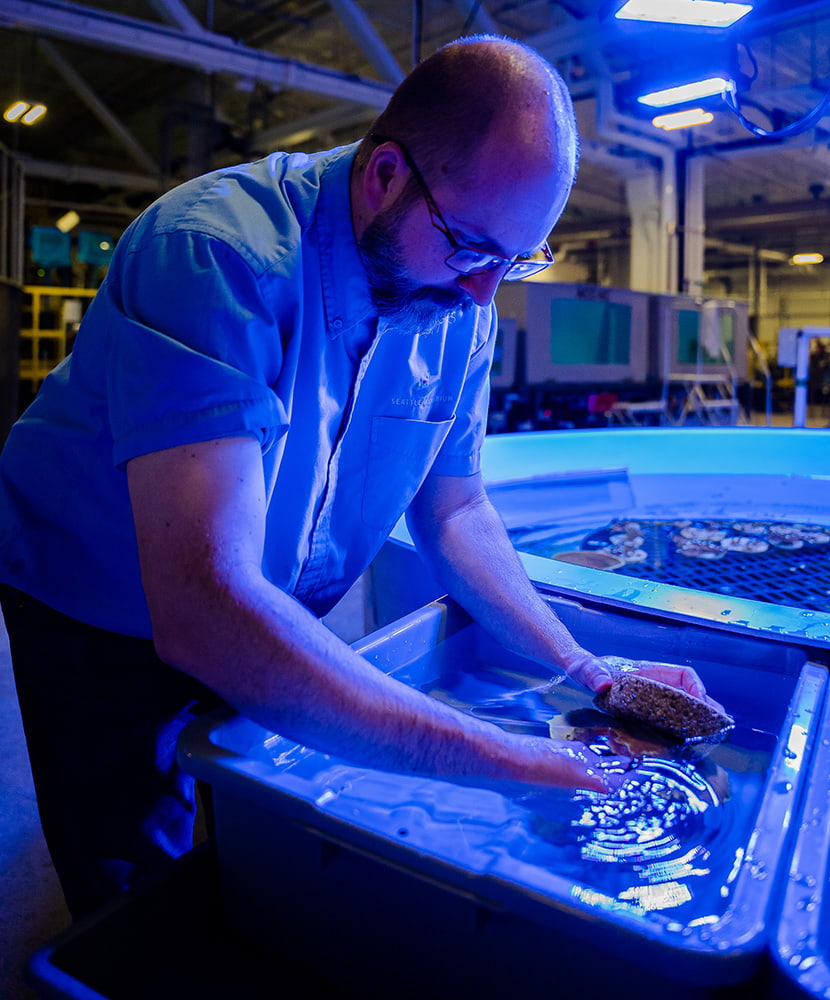
Animal Wellbeing
Caring for animals at the Aquarium is core to our marine conservation mission.
